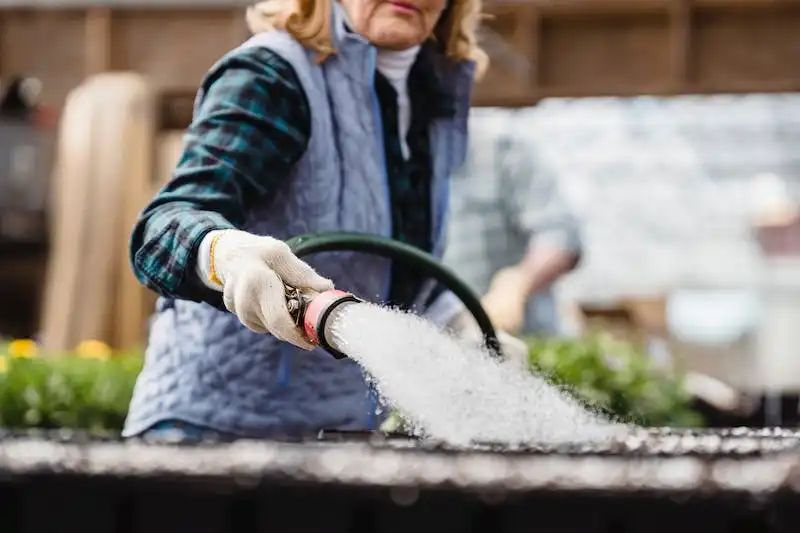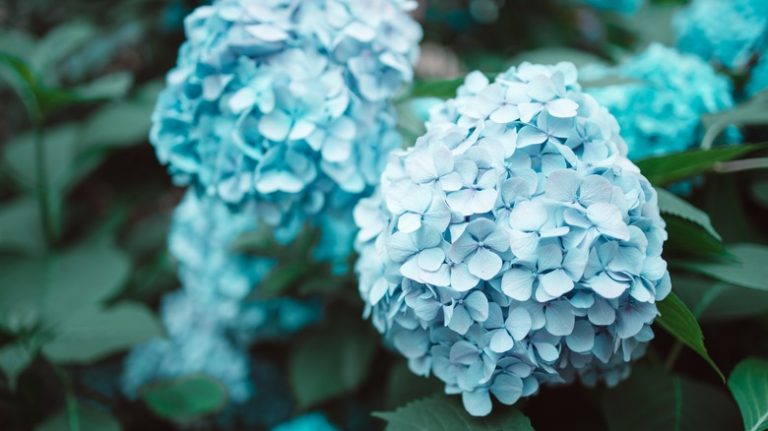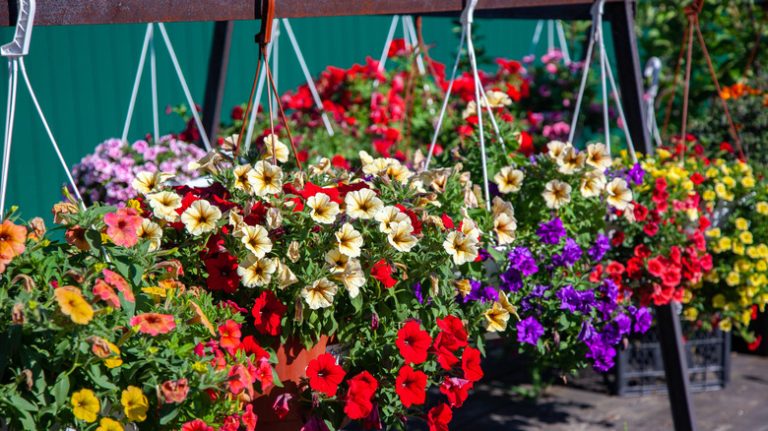If you’re looking for a beautiful and vibrant flowering plant that can thrive in both indoor and outdoor environments, look no further than the Amarillo flower. Commonly found in southern Brazil, these stunning plants are known for their show-stopping blooms and lush foliage.
When it comes to growing Amarillo flowers, there are a few key tips and tricks that can help ensure your plants thrive. First and foremost, it’s important to find the right spot for your Amarillo plant. These flowers prefer a sunny location with well-draining soil. If you’re planting them outside, make sure to choose a spot that gets at least six hours of direct sunlight each day.
For those living in cooler climates, it may be necessary to bring your Amarillo plants indoors during the colder months. This will help protect them from frost and keep them in optimal growing conditions. When moving your plants inside, be sure to acclimate them slowly to their new environment by gradually reducing the amount of sunlight they receive.
When it comes to purchasing Amarillo bulbs, there are a few things to keep in mind. First, make sure to buy from a reputable source, like a nursery or university horticulture department. Look for bulbs that are firm and free from any signs of mold or disease. If possible, choose larger bulbs, as they will likely produce more flowers.
Once you have your Amarillo bulbs, it’s time to plant them. Begin by filling a well-draining pot with a mix of potting soil and pebbles. Plant each bulb about 2-3 inches deep, making sure to space them about 6-8 inches apart. After planting, give them a thorough watering, allowing any excess water to drain away.
When it comes to caring for your Amarillo plants, proper watering is key. During the growing season, water them regularly, keeping the soil evenly moist but not waterlogged. Avoid overwatering, as this can lead to root rot. As for fertilizing, it’s best to use a balanced, water-soluble fertilizer once a month during the growing season.
Amarillo flowers typically bloom in the late spring or early summer. The blooms are typically white, but there are also hybrids available that produce flowers in a range of colors, like salmon or pink. To ensure the best blooms possible, make sure to remove any spent flowers and dead foliage regularly. This will not only keep your plants looking their best but also helps to prevent disease.
As the weather cools down and winter approaches, your Amarillo plants will enter a period of dormancy. During this time, you’ll want to reduce watering and move your plants to a cooler spot, like a basement or garage. Allow the soil to dry out slightly between waterings, but be sure not to let it completely dry out. Once spring arrives, you can gradually increase watering and move your plants back outside to prepare for another season of blooming.
In conclusion, growing and caring for Amarillo plants can be a rewarding experience. With the right conditions and care, these beautiful flowers can brighten up any space and provide enjoyment for years to come. Whether you choose to grow them indoors or outdoors, be sure to follow these tips and you’ll be rewarded with a stunning display of Amarillo blooms.
Amaryllis Hippeastrum
The Amaryllis Hippeastrum is a popular flowering plant that is loved for its trumpet-shaped flowers. If you’re planning to add some houseplants to your collection, the Amaryllis Hippeastrum is a sure bet. Here’s a guide on how to take care of these stunning flowers:
- When it comes to planting amaryllis, it’s best to start indoors. A sunny window is the perfect spot to allow the bulbs to sprout.
- Fill a pot with a coarse, well-draining soil mix and plant the amaryllis bulbs about one-third their height below the soil surface.
- Water the bulbs thoroughly but avoid excess water, as this can cause the bulbs to rot. Allow the soil to dry out slightly between waterings.
- During the growing season, amaryllis plants prefer regular feeding. Use a balanced fertilizer and follow the directions on the packaging.
- As the amaryllis bulbs grow, they will produce smaller foliage. This is normal and should not be a cause for concern.
- If you prefer to move the amaryllis outside during the warmer days, make sure to gradually acclimate it to the new spot to avoid shock.
- To encourage blooming, amaryllis plants need a dormant period. This can be induced by reducing watering and moving the plant to a cool, dark location for about two months.
- After the dormant period, bring the amaryllis back to a sunny spot and resume regular care.
- Keep in mind that the flowers of amaryllis are top-heavy. Using a support like a bamboo stake or a wire cage can help keep them upright.
- When planting amaryllis bulbs, make sure to space them at least 3 inches apart to allow the flowers to show off their full bloom.
- If you have any question or need further guidance on how to care for your amaryllis hippeastrum, don’t hesitate to ask. These common houseplants are fairly easy to grow, and with a little care, they will reward you with their beautiful blooms.
Amaryllis hippeastrum bulbs are often sold with instructions on how to plant them. Follow these directions for the best results. Remember to start well in advance if you want your amaryllis to bloom during a specific season.
When the amaryllis flowers start to fade, carefully cut them away, but leave the stem in place. This will allow the plant to absorb nutrients from the leaves, which will help it rest and prepare for the next blooming cycle.
With the right care and attention, your amaryllis hippeastrum will continue to thrive and produce stunning flowers for years to come.
Featured Articles by Season
In the world of gardening, it’s important to know when to plant certain flowers. The Amarillo Flower is no exception. Before planting, you must first know how to keep the bulb. Articles about planting this flower will show you what you need to do. While some bulbs prefer to be planted just below the surface, others will show their best results when planted deep. Every bulb has its own preferences.
Once the Amarillo Flower has been planted, it will gradually sprout, and the first petals will appear. These petals will continue to grow and fill the flower until every last one is showing. This is when the Amarillo Flower is in full bloom, and it’s a sight like no other.
If you’re thinking about buying Amarillo Flower bulbs, there are a few things you should know. First, make sure to ask for directions on how to plant and care for them. A guide will provide you with all the information you need to grow these beautiful flowers successfully. Also, be sure to check if the bulbs are sold as part of the Hippeastrum family, which the Amarillo Flower belongs to.
The Amarillo Flower is grown in many places around the world, but it is most commonly found in Brazil. This flower prefers warm and sunny climates, so if you live in a colder region, it’s best to place it near a south-facing window. This way, it will still get the sunlight it needs without being exposed to freezing temperatures.
When planting Amarillo Flower bulbs, it’s important to provide them with the right conditions. You can do this by using pebbles to fill the bottom of the pot. This allows excess water to be absorbed and prevents the bulbs from rotting. The Amarillo Flower also likes to be slightly crowded, so you can plant several bulbs together in one pot.
The Amarillo Flower requires a minimum of six hours of sunlight daily. If you can provide it with more, that’s even better. Regularly water the flowers, but be careful not to overwater them. Allow the soil to dry out between waterings. This will help induce flowering.
After the Amarillo Flower has finished flowering, you can rest it for a while. This means reducing the amount of sunlight and water it receives. After a few months of rest, you can start the process again by giving it the right conditions to grow, bloom, and show off its beautiful white petals.
By following these guidelines, you can enjoy the beauty of the Amarillo Flower in your own home. Its stunning blooms will bring color and joy to any space.
Latest Horticulture News
If you’re a fan of gardening and horticulture, then you won’t want to miss the upcoming flower show. The show will begin soon and it promises to be a spectacular display of some of the most common and beautiful plants.
When it comes to gardening, one plant that many people enjoy growing is the amaryllis. These plants thrive in full sunlight and prefer well-draining soil. If you’re unsure about how to care for your amaryllis, there are a number of resources available to give you directions.
One must-do when it comes to amaryllis care is to place it in a spot where it will receive ample sunlight. The bulb should be planted with the top third above the soil line, and the roots should be placed in a pot with drainage holes. Amaryllis prefer to be slightly crowded, so don’t be afraid to plant a number of bulbs together.
Amaryllis are known for their large and brightly colored petals, and these flowering bulbs are often featured in horticulture magazines and articles. Once the bulb begins to sprout, it won’t be long until beautiful blooms appear. After the flowers have faded, you can cut the stem back to the bulb, but don’t remove the leaves. This will allow the plant to gather energy for the next growing season.
If you’re thinking about buying amaryllis bulbs, it’s important to know that there are different varieties available. Some varieties may bloom sooner than others, so be sure to check the packaging or ask the seller for information on when you can expect your amaryllis to bloom. You may also find tips on how to care for your amaryllis and ensure that it will rebloom next season.
Amaryllis can be grown outdoors in warmer climates, such as in Southern America, but they can also be grown indoors as houseplants. If you’re placing your amaryllis outside, be sure to find a sunny spot where it can receive at least six hours of sunlight per day. If you’re growing amaryllis indoors, keep it in a well-lit area, such as near a south-facing window.
Aftercare for amaryllis involves regular waterings to keep the soil moist, but not soggy. As the stems and leaves gradually begin to yellow and die back, reduce the frequency of your waterings. Eventually, you’ll need to stop watering altogether to allow the plant to go into its dormant period. During this time, you can remove the bulb from the pot and store it in a cool, dry place.
When the next growing season begins, you can plant the amaryllis bulb back in the ground or in a new pot. With proper care, your amaryllis will rebloom and produce more beautiful flowers for you to enjoy.
Stay tuned for more articles on the latest horticulture news and what you need to know about growing and caring for your plants. From tips on planting individual bulbs to information on new hybrids, we’ve got you covered.




